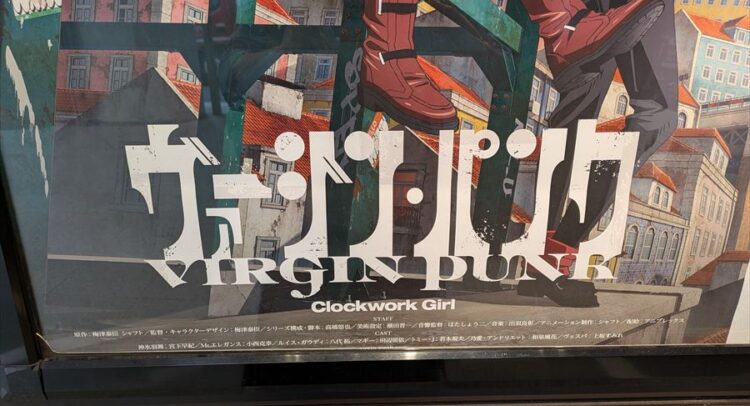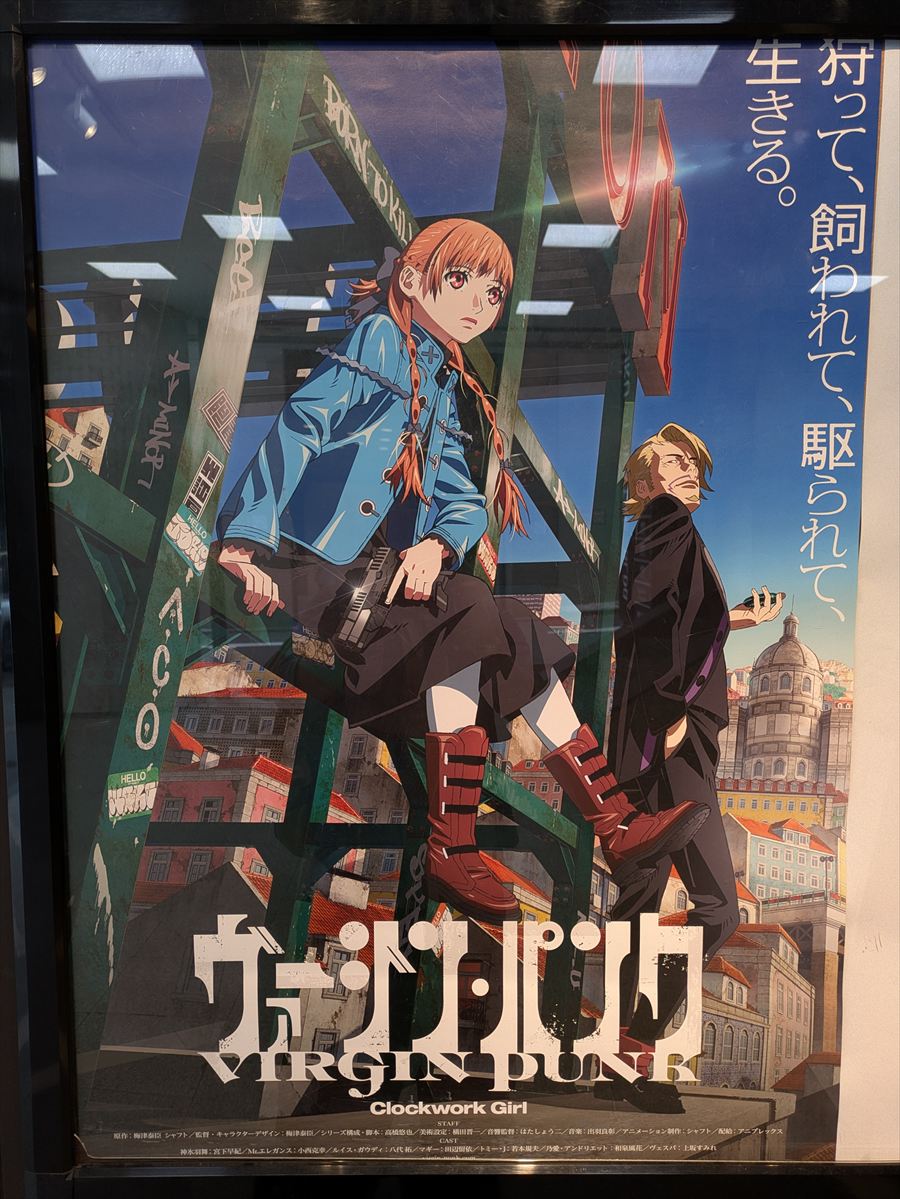From Studio Shaft and visionary director Yasuomi Umetsu comes “Virgin Punk: Clockwork Girl,” a stunning new work that feels like a powerful revival of a bygone era. While this year was initially hailed as Shaft’s big moment with both this project and the new “Madoka Magica” film, the latter’s delay to 2026 has left fans wanting. Fortunately, seeing “Clockwork Girl” on the big screen confirms that it was well worth the wait. The film is a pure, undiluted expression of Umetsu’s signature style, delivering exactly the kind of visceral and stylish action that has defined his career and evoking a potent nostalgia for the golden age of Original Video Animations (OVAs).
A Potent Return to the World of Yasuomi Umetsu
Set in the year 2099, the film thrusts viewers into a world where “Somadia” cyborg technology has advanced to the point where criminals have replaced all but their brains with powerful mechanical bodies. To combat these super-powered criminals, society has institutionalized a bounty hunter system. The story centers on Ubu Kamihi, a young woman who once lived in an orphanage run by a nefarious director who murdered parents to steal their children. After a bounty hunter eliminates the director, Ubu is inspired to enter the same profession, taking on Somadia-enhanced criminals with her natural, un-augmented body.
Her life takes a dark turn with the introduction of Mr. Elegance, a powerful figure in the bounty hunter underworld. Obsessed with Ubu’s younger self, he ensnares her in a trap and forcibly transforms her into a Somadia cyborg resembling her childhood form. Now, Ubu vows revenge against the very man who set her on this path.
As the “first installment,” the story is far from complete, ending just as Ubu’s motivation for vengeance is solidified. This narrative structure is a classic OVA trope—a tantalizing cliffhanger that leaves audiences desperate for the next chapter. The setup masterfully blends elements from Umetsu’s most famous works. A young girl seeking revenge against a manipulative figure who shaped her destiny is strongly reminiscent of A Kite, while the dark, futuristic setting filled with mercenaries recalls Mezzo Forte.
Beyond the plot, the film is a showcase of Umetsu’s directorial trademarks: a relentless parade of beautifully choreographed gun battles led by a formidable young woman, and a level of bloody violence rarely permissible on television.
The Quintessence of Realistic Animation
The film’s initial teaser, featuring a shot of Ubu unsteadily walking in a hospital gown, was a stunning display of realistic character animation, and the full feature delivers on that promise. That opening sequence is a masterclass in motion; the subtle shifts in weight and the depiction of a body heavy with exhaustion are rendered with breathtaking realism.
This commitment to character-acting through movement is evident in every frame of the 35-minute runtime. It is clear that this was a labor-intensive production. The action sequences eschew modern trends of simply whipping the camera around, instead focusing on meticulously constructed choreography, unique ideas, and a rich tapestry of effects, from billowing smoke to flying body parts. The bold use of techniques like wraparound animation shots (“mawarikomi sakuga”) creates a profound sense of three-dimensional space, making the action feel both visceral and immersive.
While there is no word on when the second installment will arrive, it is a release to be anticipated with bated breath. In the meantime, “Clockwork Girl” has sparked a renewed desire to revisit Umetsu’s classics, and one can only hope that a retrospective screening of a work like A Kite might soon follow.


